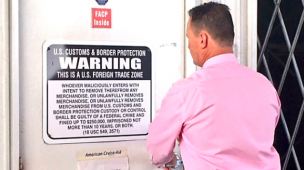Tempo de leitura: 3 minutos
The parliamentary session on Wednesday saw 127 lawmakers vote in favor and 51 against the bill, while 10 MPs abstained.
Once the parliament and the Guardians Council give their final approvals, the following FTZs will be created: Incheh Borun in Golestan Province, Mehran in Ilam Province, Ardabil in Ardabil Province, Sistan in Sistan-Baluchestan Province, Baneh-Marivan in Kurdestan Province, Jask in Hormozgan Province, Bushehr in Bushehr Province and Qasr-e Shirin in Kermanshah Province, IRNA reported.
A dozen special economic zones will be established as follows: Fasa and Lar in Fars Province, Abarkuh and Meybod in Yazd Province, Zanjan in Zanjan Province, Gachsaran in Kohgilouyeh-Boyerahmad Province, Serow-Urmia in West Azarbaijan Province, Khaf and Quchan in Khorasan Razavi Province, Khorramabad in Lorestan Province, Takestan in Qazvin Province and Shahin Shahr in Isfahan Province, according to Financial Tribune.
Moreover, a special economic zone for the production of pharmaceuticals will be established in Savojbolagh, Alborz Province.
The term “special economic zone” is commonly used to refer to any modern zone where business and trade laws differ from those on the mainland. SEZs are located within a country’s national borders while free trade zones have been established around major seaports, international airports and national frontiers that have many geographic advantages for trade.
Debates on the merits of FTZs have been based on their impact on several elements: from social issues like labor rights, environmental protection and urban planning to macroeconomic issues related to their impact on government revenues, employment, trade and foreign exchange earnings.
The primary purpose of a free trade zone is to remove trade obstacles caused by high tariffs and complex customs regulations from a port, airport or border checkpoint. They are also meant to help the government increase exports at a lower cost, create employment, attract foreign investment and revive underdeveloped regions.
Nonetheless, some lawmakers and domestic producers argue that with imports many times more than exports from Iranian free trade zones, they have practically turned into platforms for imports. Some even claim that these zones have given rise to smuggling. They oppose the establishment of free trade zones by claiming that they have been synonymous with a rise in corruption, land value and land grabbing.
“According to a report by the research arm of the parliament, free trade zones have failed to achieve their objectives and have created numerous problems for the country. For example, Qeshm is acting as a corridor for smuggling of Chinese clothing and Maku sees vast imports of raw materials. There’s no supervision over these FTZs,” Bahram Shahryari, the deputy head of Textile and Clothing Production and Exports Union, told Mehr News Agency.
“Free trade zones have been successful in attracting domestic and foreign investment, since 20,000 jobs are being created in these areas annually,” Mohammad Feyzi, a representative of Ardabil in parliament, said in support of establishing FTZs on Wednesday.
“FTZs account for 4% of Iran’s imports and only raw materials and machinery are being imported through FTZs. The Headquarters to Combat Smuggling of Goods and Foreign Exchange has never referred to smuggling through FTZs in its official reports,” he added.
In Iran, free trade zones were first authorized in 1993 in Kish, Qeshm and Chabahar. Later, Aras, Arvand, Maku and Anzali were added to the list of Iranian FTZs. According to Secretary of High Council of Free Zones Morteza Bank, 1,400 industrial units are operating in these seven FTZs.






Os comentários foram encerrados, mas trackbacks e pingbacks estão abertos.